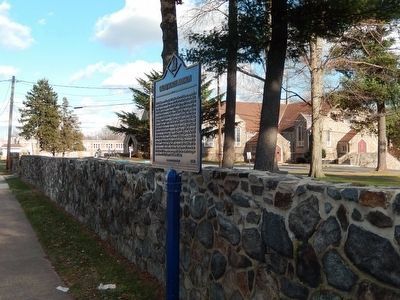7 entries match your criteria.
Related Historical Markers

By Bill Pfingsten, January 18, 2016
Grubb/Worth Mansion Marker
SHOWN IN SOURCE-SPECIFIED ORDER
| | John Grubb, one of the original English settlers in Delaware, acquired a one-third interest in a 600 acre tract of land at this location in 1680. Several generations passed and the Grubb family greatly increased their land holdings in the area and . . . — — Map (db m146375) HM |
| | Peter Grubb (c. 1700-54) carried on his initial efforts at iron-making in 1735 just slightly to the north. He used the Catalan-type forge which had originated in Spain sometime during the tenth century. — — Map (db m30274) HM |
| | Mount Hope Estate
Has Been Placed on the
National Register
of Historic Places
1980 — — Map (db m54827) HM |
| | Built by Peter Grubb. Operated from 1742 to 1883. — — Map (db m30278) HM |
| | Built c. 1740 by Peter Grubb, pioneer ironmaster at nearby Cornwall Furnace, and named for the Upper and Lower Hopewell Forges located on Hammer Creek near the house. Remnants of the forge dams may still be seen in the creek. — — Map (db m30272) HM |
| | Charcoal iron furnace built by Peter Grubb, operated 1742-1883. Best surviving example of early Pennsylvania ironworks. Now a State historical shrine, gift of Mrs. Margaret Coleman Buckingham, heir of its famous owner, Robert Coleman. — — Map (db m30277) HM |
| | Built in 1742 by Peter Grubb near an immensely rich ore deposit and acres of forest for making charcoal fuel. a self-sufficient community included the ironmaster's mansion and workers' houses. The furnace produced pig iron and cast goods, and . . . — — Map (db m30279) HM |
May. 4, 2024
